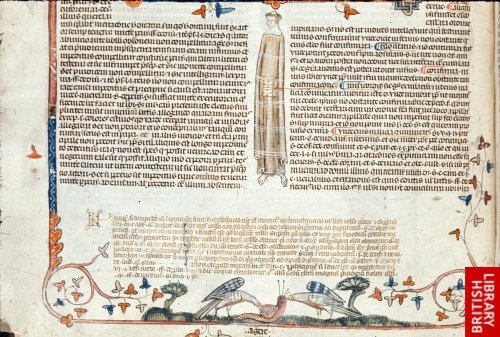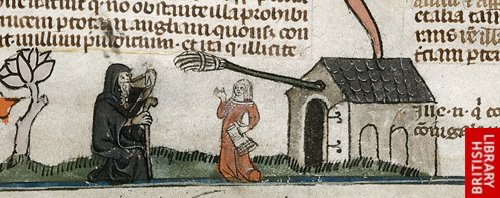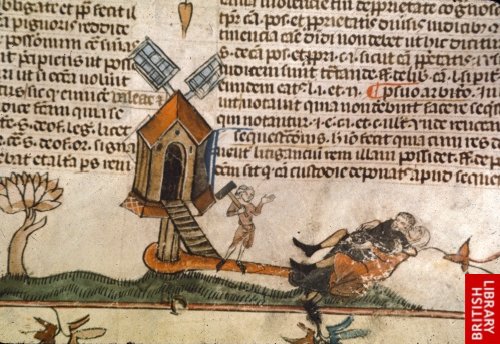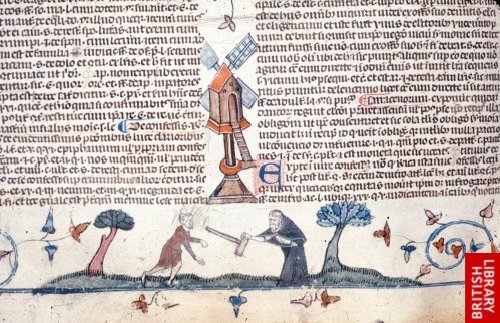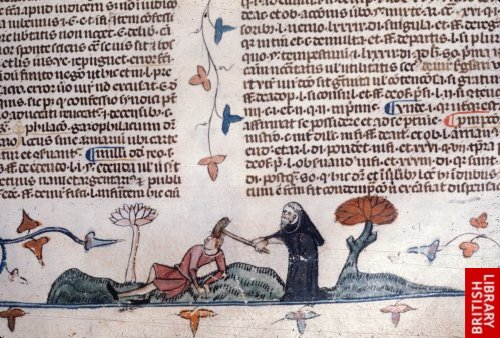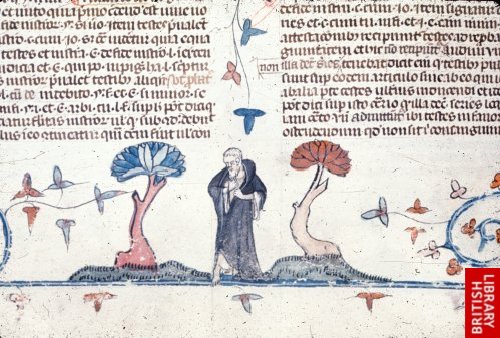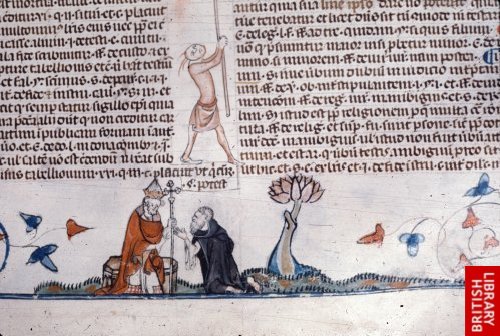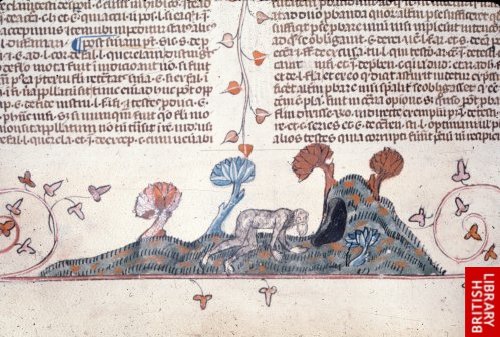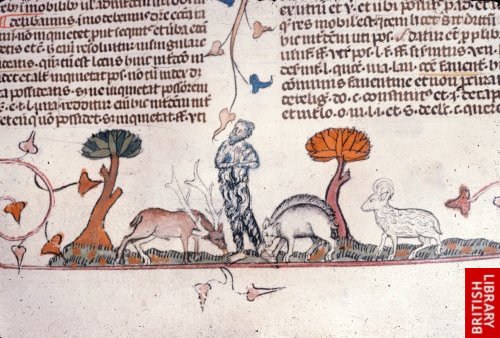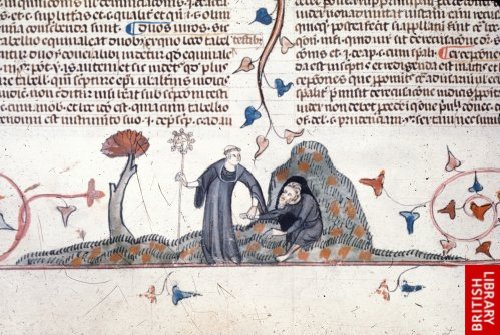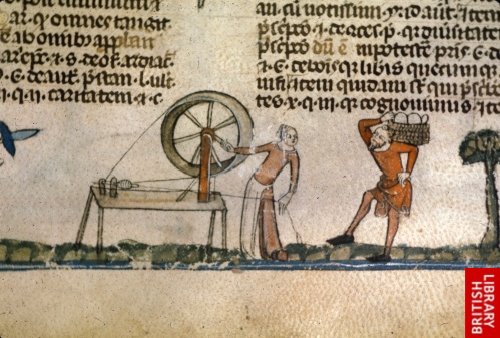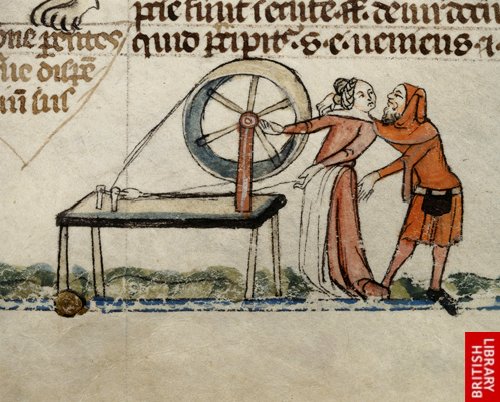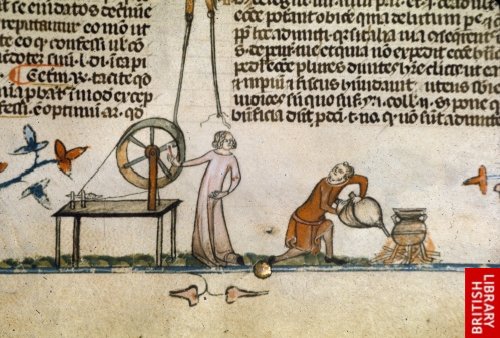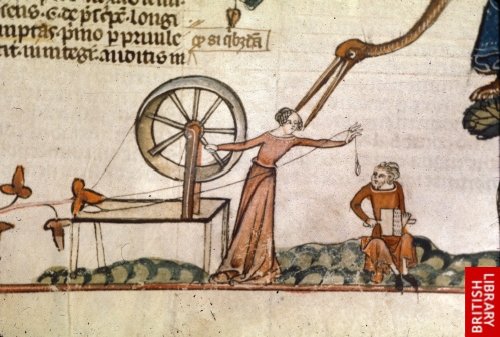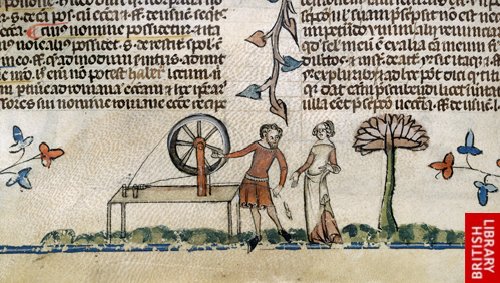Images of Medieval and early Tudor trades – part 2
Last year, I posted my first article on Medieval and early Tudor trade: a series of posts which uses images to illustrate the trades that were predominant and powerful in medieval England. Today’s post continues that theme – although some of the images have very loose connections to the trade which they are illustrating – but I hope you enjoy viewing the pictures anyway!
Bowyers (longbow makers)
 An archer sitting on a grotesque creature shooting a hapless rabbit (folio 143v) from The Macclesfield Psalter, (East Anglia, England, circa 1330), © The Fitzwilliam Museum, Cambridge
An archer sitting on a grotesque creature shooting a hapless rabbit (folio 143v) from The Macclesfield Psalter, (East Anglia, England, circa 1330), © The Fitzwilliam Museum, Cambridge
Brewers
 A sinful hermit sitting outside a tavern drinking ale; the alewife approaches him with a flagon from The Smithfield Decretals (France, Last quarter of the 13th century or 1st quarter of the 14th century) shelfmark Royal 10 E IV f. 114v.
A sinful hermit sitting outside a tavern drinking ale; the alewife approaches him with a flagon from The Smithfield Decretals (France, Last quarter of the 13th century or 1st quarter of the 14th century) shelfmark Royal 10 E IV f. 114v.
Broderers (embroiders)
 Plaque on the wall of Gutter Lane, London, EC2 – the original site of Broders Hall which was destroyed in 1940 during The Blitz. The Worshipful Company of Broderers are now located in East Moseley and are strongly associated with The Royal School of Needlework who are based at Hampton Court.
Plaque on the wall of Gutter Lane, London, EC2 – the original site of Broders Hall which was destroyed in 1940 during The Blitz. The Worshipful Company of Broderers are now located in East Moseley and are strongly associated with The Royal School of Needlework who are based at Hampton Court.
Butchers
 Smithfield Meat Market – London’s traditional livestock market for 900 years. ‘Smithfield, or “Smoothfield”, a plain, grassy space just outside the City Walls, was well known in the Middle Ages for its horse Market. In 1173 William FitzStephen, clerk to Thomas Becket, describes the area as “a smoth field where every Friday there is a celebrated rendevous of fine horses to be sold.” There was also trading in sheep, pigs and cattle. In 1305 oxen were being sold for 5s 6d each. In 1400 the City of London was granted the tolls from the market by charter. Bartholomew Fair was held here from 1123 until its suppression for rowdiness and debauchery in 1855.’ (Ben Weinreb & Christopher Hibbert, ed, The London Encyclopaedia, (London, 1983) p.789.)
Smithfield Meat Market – London’s traditional livestock market for 900 years. ‘Smithfield, or “Smoothfield”, a plain, grassy space just outside the City Walls, was well known in the Middle Ages for its horse Market. In 1173 William FitzStephen, clerk to Thomas Becket, describes the area as “a smoth field where every Friday there is a celebrated rendevous of fine horses to be sold.” There was also trading in sheep, pigs and cattle. In 1305 oxen were being sold for 5s 6d each. In 1400 the City of London was granted the tolls from the market by charter. Bartholomew Fair was held here from 1123 until its suppression for rowdiness and debauchery in 1855.’ (Ben Weinreb & Christopher Hibbert, ed, The London Encyclopaedia, (London, 1983) p.789.)
*-*-*-*-*-*-*-*-*-*-*-*-*-*-*-*-
All digital images from the Macclesfield Psalter appear by courtesy of The Fitzwilliam Museum and may not be reproduced (© The Fitzwilliam Museum).
All images are from the British Library’s collection of Medieval Manuscripts and are marked as being Public Domain Images and therefore free of all copyright restrictions in accordance with the British Library’s Reuse Guidance Notes for the Catalogue of Illuminated Manuscripts.
*-*-*-*-*-*-*-*-*-*-*-*-*-*-*-*-
This blog
If you want to read more from my blog, please do subscribe either by using the Subscribe via Email button top right of my blog, or the button at the very bottom. If you’ve enjoyed reading this post, then please do Like it with the Facebook button and/or leave a comment below.
Thank you for reading this post.
You may also be interested in the following
– Image of Medieval and early Tudor trades – part 1
– My time at the Royal School of Needlework
– Images from the British Library’s online images from the early modern period
– Images from the medieval illuminated manuscripts
– The Macclesfield Psalter
© Essex Voices Past 2012-2013.










